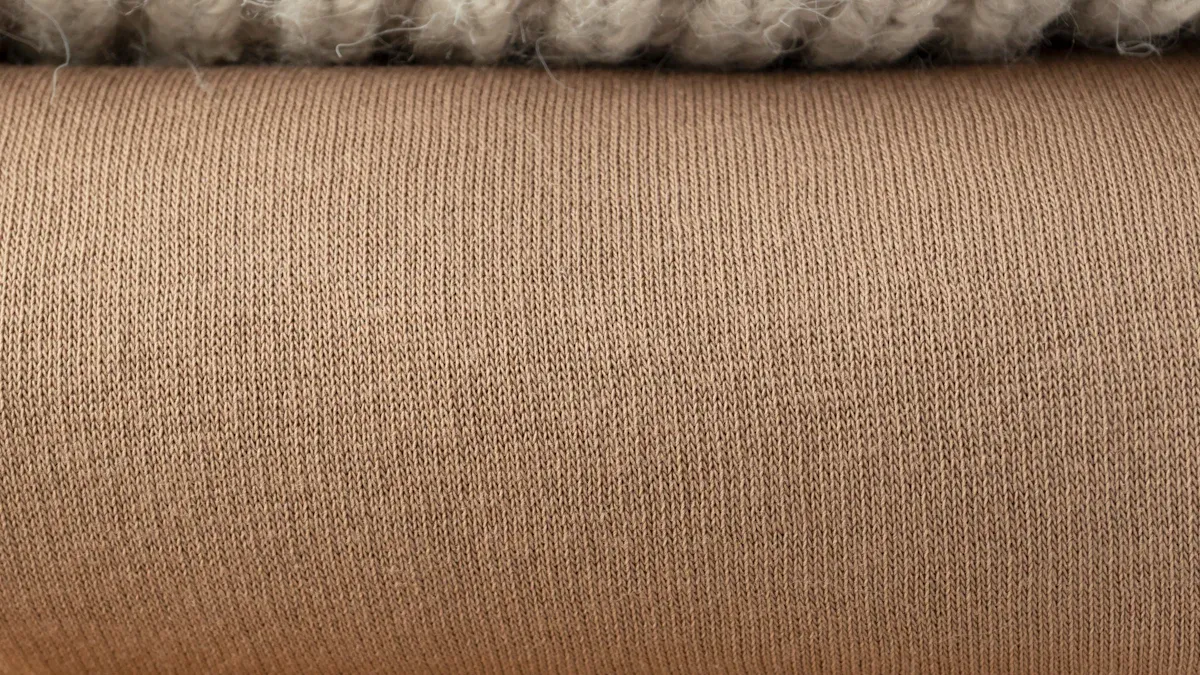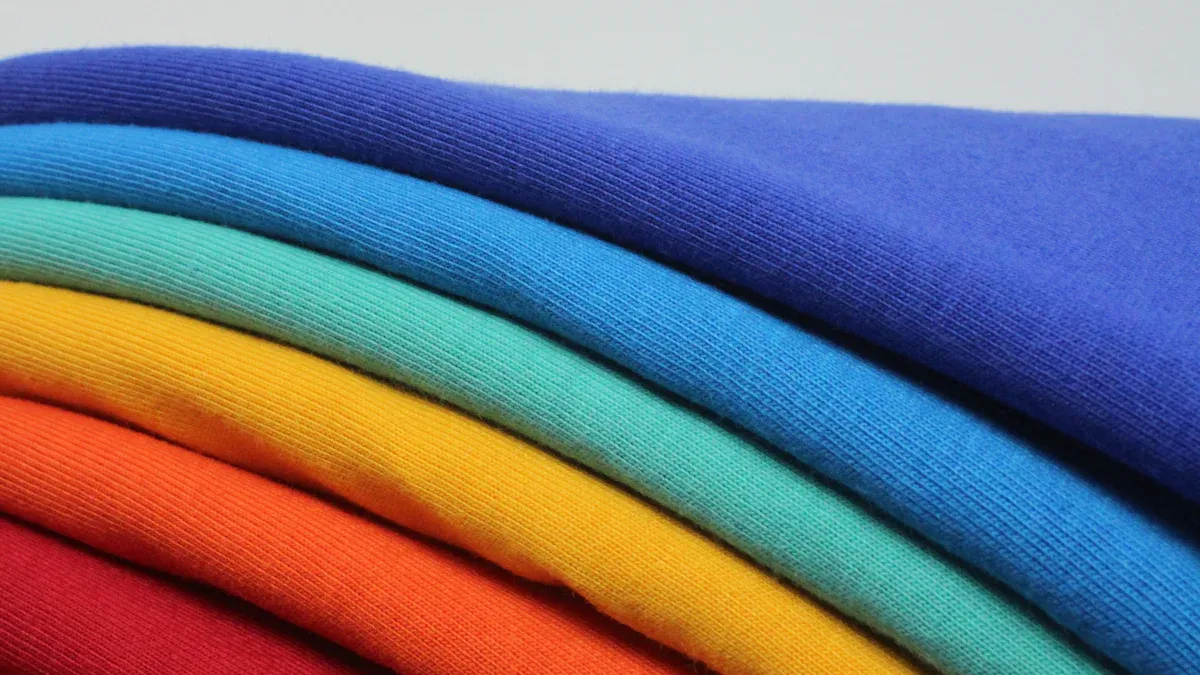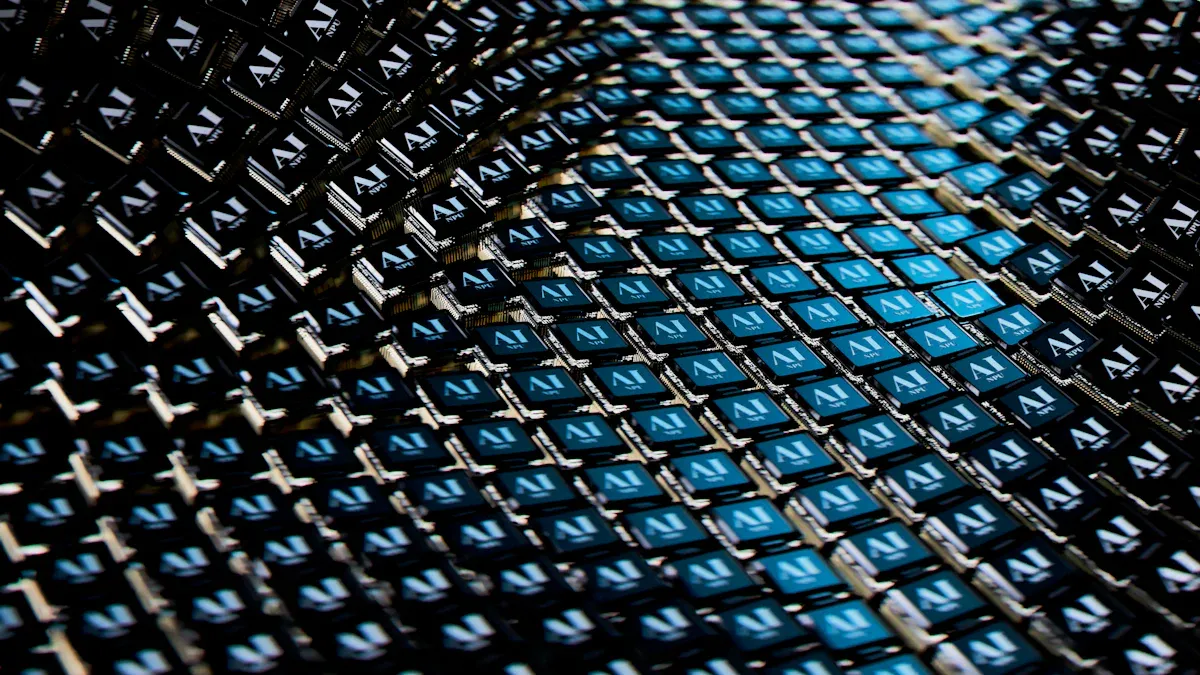
You see poly fabric mesh everywhere in 2025. This type of mesh fabric stands out because it resists water, dries fast, and stays strong even in sunlight or heat. You find it in sportswear, healthcare, marine gear, and safety equipment. Many industries choose poly fabric mesh for its durability, lightweight feel, and easy cleaning. The market grows quickly, showing its wide use and value:
| Year | Market Size (USD Billion) | CAGR (2024-2030) |
|---|---|---|
| 2023 | 4.03 | N/A |
| 2025* | ~4.75 (estimated) | 8.45% |
| 2030 | 7.11 | N/A |
Poly fabric mesh offers you a blend of strength, comfort, and versatility across many applications.
Key Takeaways
- Poly fabric mesh offers strong durability, breathability, and quick drying, making it ideal for sportswear, medical gear, and industrial uses.
- This mesh fabric is lightweight and easy to care for, helping you stay comfortable and saving time on maintenance.
- Poly fabric mesh suits many applications, from activewear and outdoor gear to medical supports and home design, showing its great versatility.
- Choosing polyester mesh helps you get good quality at a reasonable price while supporting sustainable and eco-friendly production methods.
- Proper care and selecting the right mesh type ensure long-lasting performance and keep your mesh fabric looking and working its best.
What is Poly Fabric Mesh?
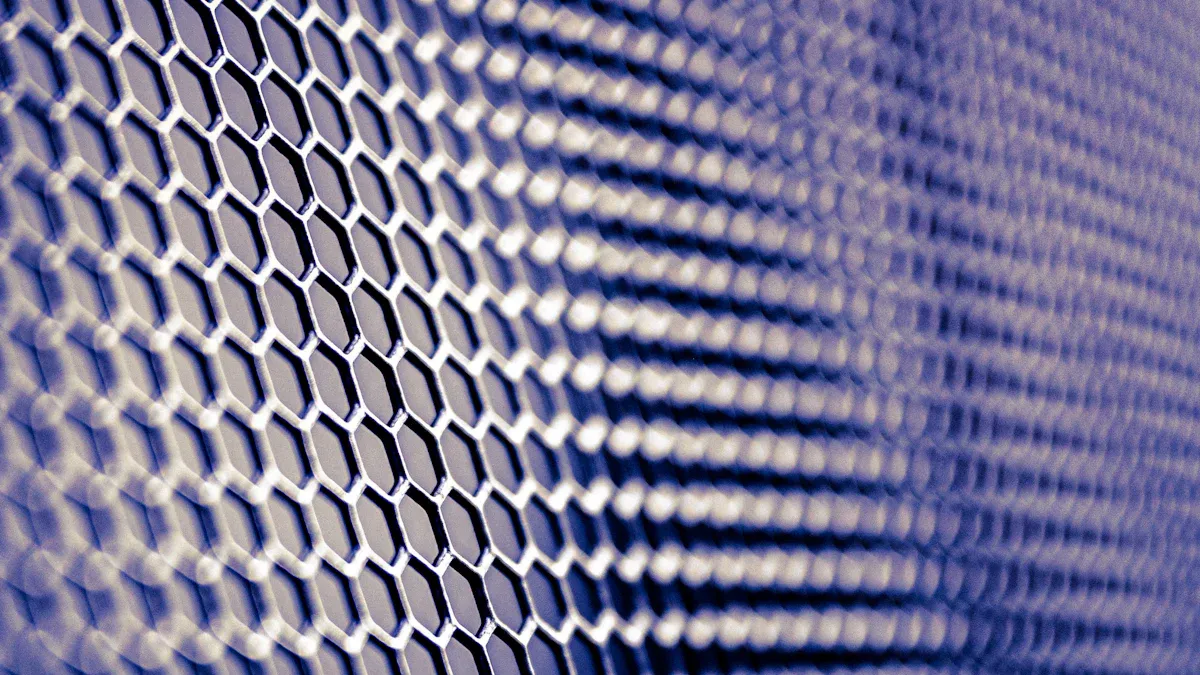
Definition and Composition of Polyester Mesh
You see polyester mesh in many products today. This mesh uses polyester fibers woven or knitted together to form a net-like structure. The spaces between the threads create a lightweight and breathable fabric. Polyester mesh stands out because it combines strength with flexibility. You get a fabric that feels soft but stays tough.
Polyester comes from synthetic polymers. Manufacturers use these polymers to make long, strong fibers. When you look at polyester mesh, you notice the even pattern of holes. This pattern lets air move through the fabric. You find polyester mesh in clothing, bags, and even medical items. The material resists shrinking and stretching. It keeps its shape after many washes.
Polyester mesh gives you a fabric that works well in many settings. You can trust it to last and perform.
Core Properties for Applications of Mesh Fabric
Polyester mesh offers several important properties. You benefit from these features in many ways:
- Durability: Polyester mesh resists tearing and damage. You can use it for tough jobs.
- Breathability: The open structure lets air flow. You stay cool and comfortable.
- Quick Drying: Polyester mesh does not hold water. You get a fabric that dries fast.
- Lightweight: You feel less weight when you wear or carry mesh fabric.
- Easy Care: Polyester mesh cleans easily. You do not need special washing steps.
- UV Resistance: The mesh stands up to sunlight. You can use it outdoors without worry.
- Color Retention: Polyester mesh keeps its color after many washes.
You see these properties in many applications of mesh fabric. The advantages of polyester mesh make it a top choice for sportswear, industrial gear, and more. You get a fabric that adapts to your needs and lasts a long time.
Main Applications of Poly Fabric Mesh in 2025
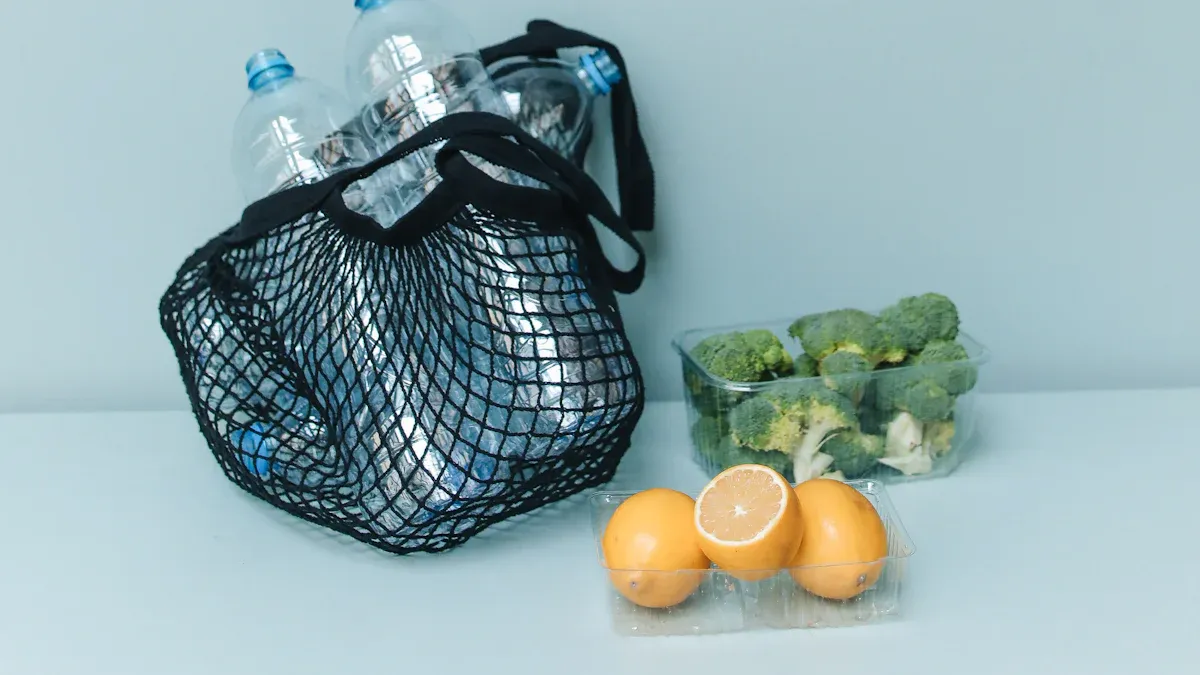
Apparel and Sportswear Applications
You see poly fabric mesh everywhere in activewear and fashion. This mesh fabric gives you lightweight comfort and breathability. When you wear activewear, you feel cool because the mesh allows air to move freely. Polyester mesh stands out in sports jerseys, shorts, and training tops. You notice it in shoes, hats, and even bags. The open structure of mesh fabric helps wick away sweat, keeping you dry during intense activities.
Designers use mesh in both fashion and functional clothing. You find mesh panels in leggings, jackets, and even dresses. These panels add style and improve airflow. Polyester mesh resists shrinking and stretching, so your clothes keep their shape after many washes. In the recreational sporting goods industry, mesh fabric appears in backpacks, gloves, and protective gear. You benefit from its durability and easy care. Mesh fabric supports both performance and style in modern activewear.
Industrial Applications of Mesh Fabric
You rely on mesh fabric for many industrial uses. Factories and warehouses use polyester mesh for filtration, separation, and reinforcement. You see mesh in conveyor belts, screens, and protective covers. The strength of polyester mesh makes it ideal for heavy-duty tasks. Mesh fabric stands up to abrasion and chemicals, so it lasts longer in tough environments.
Industrial applications include safety vests, work uniforms, and equipment covers. Mesh panels in safety gear help workers stay cool on the job. You also find mesh in automotive and aerospace industries. Here, mesh fabric supports ventilation and reduces weight in seats and panels. Polyester mesh helps you meet strict standards for durability and performance. You save time and money because mesh fabric needs less maintenance and replacement.
Outdoor and Agricultural Applications
You use poly fabric mesh in many outdoor and agricultural settings. Mesh fabric provides ventilation and shade for crops and livestock. Farmers install mesh in overhead structures and side curtains to protect plants from harsh sunlight and weather. You benefit from the combination of airflow and UV protection.
- Poly fabric mesh shields crops from UV rays, moisture, frost, hail, and excessive sunlight.
- Mesh tarps and covers resist tearing and maintain strength over time.
- UV-treated polyethylene tarps with mesh components allow air to flow while protecting hay bales, grain, and sensitive crops.
- Mesh fabric reduces crop spoilage and pest problems by improving ventilation.
- You save money because mesh fabric lasts longer and needs fewer replacements.
- Mesh fabric helps you meet environmental standards and improves efficiency in your operations.
You also see mesh fabric in recreational applications like tents, canopies, and outdoor furniture. Mesh panels keep you cool and comfortable during outdoor activities. The versatility of mesh fabric supports both agricultural and recreational needs.
Medical and Healthcare Applications
You find mesh fabric in many medical applications today. Hospitals and clinics use polyester mesh for its strength and cleanliness. You see this material in surgical gowns, face masks, and wound dressings. The open structure of mesh allows air to pass through, which helps wounds heal faster. Doctors and nurses choose mesh because it resists bacteria and dries quickly.
You also notice mesh in orthopedic supports and braces. The lightweight feel of polyester mesh makes these supports comfortable for long wear. Patients benefit from the breathability, which reduces skin irritation. In some medical uses, mesh fabric forms part of implantable devices. Surgeons use mesh to support tissues during recovery. You trust polyester for its durability and safety in these sensitive environments.
Note: Mesh fabric helps keep medical environments clean and safe. You rely on its easy care and strong performance for many medical uses.
Home and Interior Design Applications
You see mesh fabric in many parts of your home. Designers use polyester mesh for window screens, curtains, and room dividers. The mesh lets light and air flow into your space while keeping insects out. You enjoy fresh air without worrying about bugs.
You also find mesh in laundry bags, storage bins, and organizers. The open weave helps items dry faster and stay fresh. Many people choose mesh for chair backs and cushions. The breathability keeps you cool and comfortable, even on warm days. Polyester mesh resists stains and fading, so your home looks bright and clean for a long time.
Some creative applications include lamp shades, wall art, and decorative panels. Mesh fabric adds texture and style to your living spaces. You can match mesh with many colors and patterns to fit your taste.
Notable Products: Suerte and Industry Leaders
You want reliable mesh fabric for your projects. Suerte stands out as a leader in the industry. The company uses advanced machinery and skilled workers to produce high-quality polyester mesh. You benefit from their wide range of fabric types and processing techniques.
Suerte offers solutions for many applications. You can request custom designs, colors, and finishes. The company supports you with quick sample verification and fast production cycles. You save time and reduce risk when you work with Suerte.
Other industry leaders also provide strong mesh fabric options. They focus on quality, durability, and innovation. You find products that meet strict standards for medical, industrial, and home uses. When you choose a trusted supplier, you get mesh fabric that performs well in every application.
Tip: Look for companies that offer one-stop service. You get help with design, fabric selection, and production, making your project easier and more successful.
Key Benefits of Poly Fabric Mesh
Durability and Longevity
You want materials that last. Poly fabric mesh gives you strong durability in many conditions. You can use this mesh fabric for months or even years without seeing much wear. Manufacturers test poly fabric mesh in labs and in the field to check its strength. At CITEVE laboratory in Portugal, experts tested poly fabric mesh for tear strength, bursting strength, mesh size, and tensile strength. These tests followed EN ISO standards and WHO procedures.
- Tear strength tests show how well the mesh resists rips and snags.
- Bursting strength checks if the mesh can handle pressure without breaking.
- Tensile strength measures how much force the mesh fabric can take before it stretches or snaps.
- Mesh size tests make sure the holes stay the right size, even after washing and use.
You see that poly fabric mesh keeps its shape and strength even after 36 months of use. The fabric weight may increase with washing, but the mesh still meets manufacturer standards. This means you can trust poly fabric mesh for long-term use in sportswear, industrial gear, and home products. The durability of this mesh fabric helps you save money and time because you do not need to replace it often.
Tip: Choose poly fabric mesh for projects that need strong, long-lasting materials. You get reliable performance in both indoor and outdoor settings.
Breathability and Comfort
You feel the difference when you wear poly fabric mesh. This mesh fabric stands out for its breathability. The open knit structure lets air move freely through the fabric. You stay cool and dry, even during intense activities. Poly fabric mesh also has excellent moisture-wicking properties. It pulls moisture away from your skin and helps it evaporate quickly. This keeps you comfortable in both hot and humid conditions.
Let’s compare the breathability of different mesh fabrics:
| Mesh Fabric Type | Breathability | Additional Properties | Common Usage |
|---|---|---|---|
| Polyester Mesh | Very breathable due to loose knit with holes; superior breathability combined with moisture-wicking | Strongest mesh fabric; lightweight; excellent sweat-wicking; high tensile and tear strength | Sportswear, apparel |
| Nylon Mesh | Breathable but less commonly used in apparel | Used more for home items like tent screens, laundry hampers; less common in sportswear | Home goods, occasional apparel |
| Power Mesh | Breathable with higher elasticity | More elastic than regular mesh; used in shapewear and sportswear | Sportswear, shapewear |
| Tulle | Breathability inherent in mesh structure but used mainly for aesthetic purposes | Hexagon pattern mesh; used in performance attire | Performance costumes, tutus |
You notice that polyester mesh offers the best breathability and moisture-wicking properties. This makes it perfect for activewear and sportswear. You also find it in fashion items where comfort and style matter. The breathability and ventilation of poly fabric mesh help you stay fresh and dry. You do not feel sticky or overheated, even after hours of activity. The mesh fabric supports your comfort in every season.
Note: Poly fabric mesh gives you both breathability and moisture control. You enjoy comfort whether you are working, playing sports, or relaxing at home.
Cost-Effectiveness
You want to get the best value for your money. Poly fabric mesh offers you cost-effectiveness across many uses. When you compare prices, you see that polyester mesh fabrics fall into a lower to mid-price range. Specialty meshes, like trampoline mesh or Phifertex® PVC vinyl-coated mesh, cost much more. You can use poly fabric mesh in large projects without breaking your budget.
| Mesh Material Type | Price Range per Linear Yard (2025) | Example Products and Prices |
|---|---|---|
| Polyester Mesh Fabrics | $7.50 – $12.50 | 60″ 3549 Mini Mesh ($7.50), 60″ 1571 Medium Polyester Mesh ($8.50), 60″ 8838 White Polyester Athletic Mesh ($9.50 sale), 50″ 8600 Polyester Dive Mesh ($10.95), 60″ Heavy Polyester Mesh ($12.50) |
| Other Mesh Materials | $4.75 – $34.95 | Fiberglass Screening ($4.75), Nylon Athletic Mesh ($13.95), Phifertex® PVC Vinyl Coated Polyester Mesh ($25.95 – $31.95), Trampoline Mesh ($34.95), Cargo Netting ($10.50 – $32.95) |
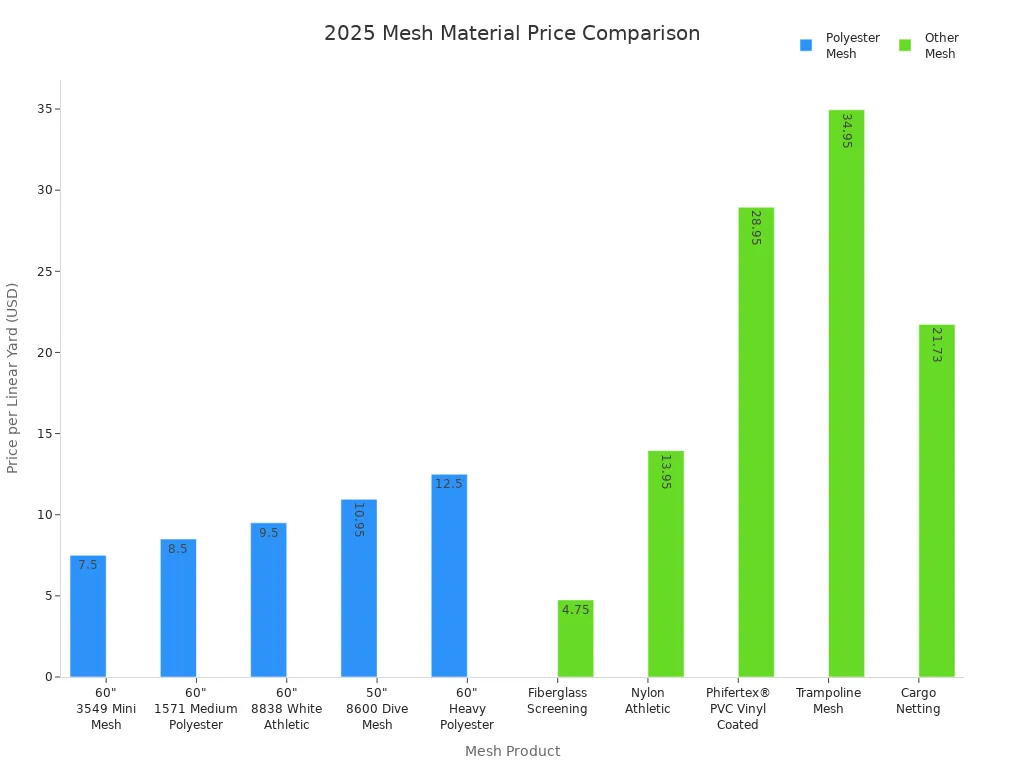
You see that poly fabric mesh gives you the advantages of durability, breathability, and moisture-wicking properties at a reasonable price. You do not have to pay extra for high performance. This makes poly fabric mesh a smart choice for manufacturers, designers, and anyone who wants quality mesh fabric for activewear, fashion, or industrial uses.
Callout: Poly fabric mesh helps you control costs while delivering top performance. You get more value for every dollar spent.
Sustainability and Environmental Impact
You care about the planet. Poly fabric mesh helps you make eco-friendly choices in 2025. Many manufacturers now focus on sustainability. They use new methods and materials to lower their impact on the environment. You see this in the way they produce mesh fabric and manage resources.
Here is a table that shows some of the top sustainability certifications and green practices you find in the mesh industry:
| Sustainability Certification / Initiative | Description | Example Manufacturer / Practice |
|---|---|---|
| Oeko-Tex Standard | Ensures fabrics meet strict environmental and social rules. Tests for harmful substances and checks the whole production chain. | Industry-wide recognized certification for sustainable fabrics. |
| Use of Renewable Energy | Uses solar and wind power to cut carbon emissions and build greener supply chains. | MH Company uses photovoltaic power to lower its carbon footprint. |
| Biodegradable Materials | Uses GRS-certified PLA biodegradable threads, recycled fibers, and bio-based accessories. Meets biodegradability rules (at least 30%). | MH Company offers GRS-certified eco-threads and recycled buttons. |
| Advanced Wastewater Treatment | Uses better dyeing processes and closed-loop water systems to cut water pollution and save resources. | MH Company uses advanced wastewater treatment systems. |
| Circular Economy Practices | Recycles and reuses materials to reduce waste and support sustainability. | MH Company follows circular economy trends and rules. |
| Transparency and Compliance Documentation | Gives certification and compliance papers to meet rules and customer needs. | MH Company keeps transparency with certifications and eco-innovation. |
You notice that mesh fabric production now uses less water and energy. Factories use solar panels and wind turbines. They recycle water and treat waste before releasing it. Some companies use biodegradable threads and recycled fibers. This means your mesh products can break down faster after use. You help reduce landfill waste when you choose these options.
Many mesh fabric makers also follow the Oeko-Tex Standard. This means your mesh does not have harmful chemicals. You get safe products for your skin and the environment. Companies now share their certifications and eco-friendly steps. You can check these documents before you buy.
Tip: When you pick mesh fabric with eco-certifications, you support a cleaner planet and safer products for your family.
Versatility Across Applications
You want a material that fits many needs. Poly fabric mesh gives you unmatched versatility. You see it in sports, industry, home, and even medical fields. The open knit structure allows for breathability and quick drying. This helps you stay comfortable and dry, even in tough conditions.
Here are some of the most common uses for mesh fabric:
- Athletic wear and sporting goods
- Protective wear and safety vests
- Enclosure netting at sporting events
- Backpack linings and sport apparel
- Cargo separation and protection
- Vehicle and airplane seat pockets
- Construction zone fencing
- Fishing nets
You find mesh fabric in professional sports jerseys, outdoor gear, and marine equipment. Its breathability and moisture control make it perfect for activewear. You also see it in aerospace and automotive industries. Here, mesh supports seat structures and safety harnesses. In medical settings, mesh fabric helps with wound care and support braces.
The strength-to-weight ratio of mesh fabric stands out. You get strong support without extra weight. This makes it easy to carry and use. Mesh fabric resists moisture and dries fast. You spend less time cleaning and more time using your gear.
Note: Mesh fabric adapts to many industries because of its breathability, moisture-wicking, and durability. You can trust it for comfort, safety, and performance.
You see mesh fabric in contract furniture, military gear, and industrial products. Its versatility means you can use one material for many jobs. You save money and reduce waste by choosing mesh fabric for different needs.
Poly Fabric Mesh vs. Other Materials
Polyester Mesh vs. Cotton Mesh
You often choose between polyester mesh and cotton mesh for clothing and gear. Each fabric has unique strengths. Polyester mesh stands out for its durability and easy care. You get a fabric that resists stretching, shrinking, and fading. Cotton mesh feels softer and more natural, but it does not last as long in high-stress situations. When you need something for sports or outdoor use, polyester mesh gives you better performance and less maintenance.
| Attribute | Polyester Mesh Fabric | Cotton Mesh Fabric |
|---|---|---|
| Strength | Durable, resists stretching and shrinking | Less durable, can stretch and shrink |
| Durability | Fights fading and wear, great for tough jobs | Not ideal for heavy use |
| Maintenance | Easy to clean, keeps shape and color | Needs more care, can shrink or fade |
| Moisture Handling | Wicks moisture, keeps you dry | Absorbs moisture, less effective at wicking |
| Feel | Lightweight, synthetic feel | Soft, natural feel |
Tip: Choose polyester mesh when you want a fabric that lasts longer and needs less care.
Polyester Mesh vs. Nylon Mesh
You see both polyester mesh and nylon mesh in sports and technical gear. Nylon mesh has higher moisture-wicking ability, so it moves sweat away from your skin quickly. Polyester mesh still wicks moisture but not as fast as nylon. You get more abrasion resistance with polyester mesh, which means it stands up better to rough use. Nylon mesh feels more elastic and holds its shape well, but it can wear out faster if you use it in tough environments.
| Property | Nylon Mesh | Polyester Mesh |
|---|---|---|
| Moisture-wicking | Higher moisture-wicking capability | Lower moisture-wicking capability |
| Elasticity | More elastic, keeps shape better | Less elastic, shape retention lower |
| Abrasion Resistance | Lower abrasion resistance | Higher abrasion resistance |
| Breathability | Lightweight and breathable | Lightweight and breathable |
| UV, Mildew, Mold Resistance | Resistant | Resistant |
Note: Pick polyester mesh for gear that faces lots of wear and tear. Nylon mesh works best when you need top moisture control.
Polyester Mesh vs. Natural Fiber Mesh
You may want to know how polyester mesh compares to natural fiber mesh, such as jute or PLA-based fabrics. Natural fiber mesh comes from renewable sources and breaks down faster in the environment. Polyester mesh uses petroleum-based materials and takes much longer to decompose. When you look at the life cycle, natural fiber mesh uses less energy and water during production. It also sheds biodegradable particles instead of microfibers that can pollute water.
| Life Cycle Stage | Polyester Mesh Environmental Impact | Natural Fiber Mesh Environmental Impact |
|---|---|---|
| Raw Materials | Made from non-renewable petroleum | Made from renewable, biodegradable fibers |
| Yarn Production | Uses heavy metals, higher toxicity | Fewer toxic substances, lower toxicity |
| Fabric Manufacturing | High energy use, some energy-saving methods | Lower energy and water use |
| Consumer Use | Quick drying, but releases microfibers | No microfibre pollution, biodegradable particles |
| End of Life | Slow to decompose, recyclable but persistent | Biodegradable, compostable, decomposes quickly |
If you want a fabric with less environmental impact, natural fiber mesh is a strong choice. Polyester mesh gives you more durability and performance for demanding uses.
Choosing the Right Poly Fabric Mesh for Your Applications
Factors to Consider When Selecting Polyester Mesh
You want to choose the right polyester mesh for your needs. Start by thinking about the main use. Some applications need strong mesh, while others need more breathability. Look for mesh fabric that matches your project. Polyester mesh comes in different weights and hole sizes. A fine mesh works well for medical or filtration uses. A larger, open mesh fits sportswear or outdoor gear.
Check if the polyester mesh meets important certifications. Standards like Global Recycle Standard (GRS), ISO, ANSI, OSHA, EPA, and ASTM show that the mesh fabric is safe, sustainable, and high quality. You also want to consider properties such as durability, flexibility, and if the mesh uses recycled or biodegradable materials. Polyester mesh with these features supports both performance and environmental goals.
Tips for Choosing the Best Mesh Fabric
You can follow some best practices to get the most from your polyester mesh. Here are some expert tips:
- Pick polyester mesh with strong tensile strength for long-lasting use.
- Choose mesh fabric with good breathability if you need comfort, such as in sportswear.
- For sustainability, select polyester mesh made from recycled fibers.
- Always check for certifications to ensure safety and quality.
- Use gentle washing methods. Hand wash or use a laundry net on a gentle cycle.
- Air dry your mesh fabric. Avoid tumble drying to keep the polyester fibers strong.
- Stay away from harsh chemicals like bleach or strong detergents.
Tip: Store your polyester mesh folded or hung in a cool, dry place. This helps prevent damage and keeps the mesh ready for all your applications.
Common Mistakes to Avoid in Applications
You can avoid problems by watching out for common mistakes. Do not use harsh chemicals or fabric softeners on polyester mesh. These can weaken the fibers. Never leave stains or dirt on the mesh for a long time. Clean them quickly with gentle solutions like baking soda paste or diluted vinegar.
Avoid storing mesh fabric near heat sources. High heat can damage polyester fibers. Do not overload washing machines with mesh items. This can cause pilling or stretching. Always match the mesh type to your application. Using the wrong mesh can lead to poor results or faster wear.
Note: Careful selection and proper care help your polyester mesh last longer and perform better in all applications.
You see poly fabric mesh leading the way in 2025. This material supports many applications, from sportswear and medical gear to furniture and automotive parts.
- You benefit from its breathability, durability, and easy care.
- Companies use new technology and sustainable methods to make mesh even better.
- Experts highlight its versatility and cost-effectiveness for different industries.
Choose mesh from trusted suppliers like Suerte to meet your unique needs and stay ahead in a changing market.
FAQ
What is the best way to clean poly fabric mesh?
You should hand wash poly fabric mesh with mild soap and cool water. Avoid bleach and strong detergents. Air dry the fabric. This keeps the mesh strong and looking new.
Can you use poly fabric mesh outdoors?
Yes, you can use poly fabric mesh outdoors. The fabric resists sunlight, moisture, and mildew. You find it in tents, covers, and outdoor furniture. It stays strong in many weather conditions.
Is poly fabric mesh safe for sensitive skin?
Poly fabric mesh is safe for most people. Many manufacturers use Oeko-Tex certified materials. This means the fabric does not have harmful chemicals. You can use it for clothing and medical items.
How do you choose the right mesh size for your project?
Tip: Pick a fine mesh for filtration or medical uses. Choose a larger mesh for sportswear or outdoor gear. Always match the mesh size to your project’s needs for the best results.

